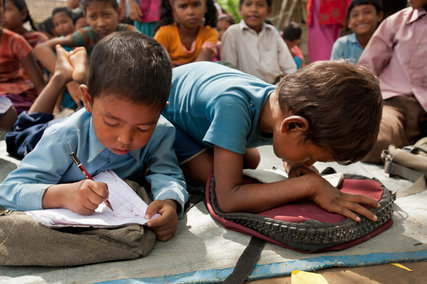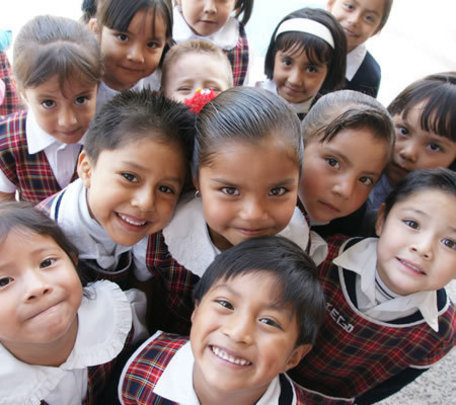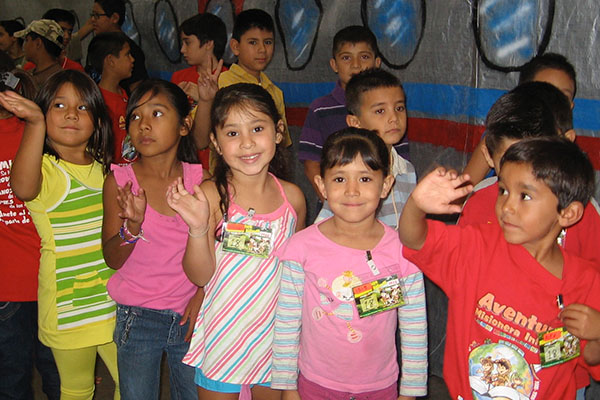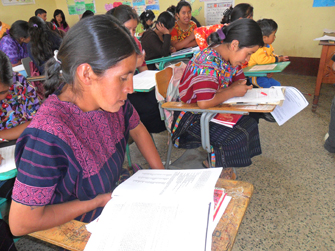Global Foundation to Upgrade Underserved Primary and Secondary Schools
Educate to Uplift, Elevate and Create Self-relianceLATIN AMERICA (SOUTH & CENTRAL AMERICA)
State of Underserved Primary and Secondary Schools
Latin America is one part of the world where underserved primary schools are a primary concern to researchers in the educational arenas; numerous research has been completed, investigations and recommendations made to improve underserved schools in archetypal rural areas to produce successful and measured outcomes that meet acceptable standards. The results were mixed. In order to understand the basis for the educational inertia resulting in poor economic growth in the regions we need to look first at the problems from an historical perspective. Latin America is the region of the world where the Colonial mode of social organization remained in force the longest -300 years since the arrival of the Spanish conquerors (1492) to the first wars of Independence (1810) -- (Nelly Stomquist, Professor of International Development Education at the University of Southern California, 2001). The social mix of the region, Indigenous peoples, Indians, African Slaves and a dominant white minority that persisted over the years was not conducive to the establishment of a fair social and economic exchange between all of its people. Large land holdings by wealthy descendants of the colonists and subsistence agriculture by impoverished farmers characterize the region today.

Very little attention is paid to the children of the poor who live mostly in the rural areas and are forced to choose between attending a primary school or working on the farm. Lack of coordinated education policies and budget restraints resulted in an education infrastructure without a forward looking mission for a 20th or 21st century. Schools are mostly in archetypal rural areas in a one room school setting, with untrained teachers and poor instructional materials.
The school is often staffed by a single teacher and may not offer a complete primary education.
 Reforms were undertaken to address problems of Multigrade classes in a one-room school setting and the plans were: (1) Teachers would receive training to teach in a Multigrade school setting. (2) Teachers and students were provided with instructional materials and textbooks suited for a one room school house setting. (3) Teachers were encouraged to develop contacts with other colleagues and to share experiences with them.
Reforms were undertaken to address problems of Multigrade classes in a one-room school setting and the plans were: (1) Teachers would receive training to teach in a Multigrade school setting. (2) Teachers and students were provided with instructional materials and textbooks suited for a one room school house setting. (3) Teachers were encouraged to develop contacts with other colleagues and to share experiences with them.
This reform was implemented throughout several Latin American countries including Columbia, Guatemala, Chile and produced mixed results. There were obvious improvements in the learning outcomes, but budget restrictions which resulted in restriction of full compliments of instructional resources had an impact on the overall learning outcomes.

Read more .........................
Excerpts from leading organizations of some of the challenges which face Latin American countries. Issues that need to be addressed in order to move the countries forward into the 21st century.
 Poverty increased during the 1980-1990 decade in Latin America, going from 46 percent to 60 percent in urban areas and from 80 to 85 percent in the countryside. Extreme poverty increased from 22 to 27 percent in urban areas and from 50 to 52 percent in rural areas, according to statistics gathered by the Economic Commission for Latin America and the Caribbean, also known as CEPAL. In Brazil, the industrial giant of Latin America, 1990 urban poverty stood at 39 percent, or 9 percent above its 1979 level and 5 percent above its 1987 level...... dvv International
Poverty increased during the 1980-1990 decade in Latin America, going from 46 percent to 60 percent in urban areas and from 80 to 85 percent in the countryside. Extreme poverty increased from 22 to 27 percent in urban areas and from 50 to 52 percent in rural areas, according to statistics gathered by the Economic Commission for Latin America and the Caribbean, also known as CEPAL. In Brazil, the industrial giant of Latin America, 1990 urban poverty stood at 39 percent, or 9 percent above its 1979 level and 5 percent above its 1987 level...... dvv International Educational statistics for Latin America at first glance show an ideal situation in many countries evincing rates of nearly 100 percent in gross primary school enrollment. An examination of secondary school enrollment shows a much lower figure, comparable to that of Africa – which means that a large number of young people leave primary school, often without completing it. When educational statistics are contrasted between urban and rural populations, enrollment rates among the latter populations are consistently much lower................. Dive International
Educational statistics for Latin America at first glance show an ideal situation in many countries evincing rates of nearly 100 percent in gross primary school enrollment. An examination of secondary school enrollment shows a much lower figure, comparable to that of Africa – which means that a large number of young people leave primary school, often without completing it. When educational statistics are contrasted between urban and rural populations, enrollment rates among the latter populations are consistently much lower................. Dive International
In Latin America and the Caribbean, over 8 million people aged 15 to 24 have not even completed primary school and need alternative pathways to acquire basic skills for employment and prosperity. This is equivalent to almost one in twelve young people. Almost half of the population in the region is under 25-years-old. Worldwide, one in eight young people is unemployed; a quarter is trapped in jobs that keep them on or below the poverty line. As the effects of the global economic crisis continue to be felt, the severe lack of youth skills is more damaging than ever............ UNESCO
It shows that young people need the skills taught at primary and lower secondary school to find decent jobs. In Latin America and the Caribbean, almost 2.7 million children are still missing out on primary school and 1.7 million teenagers are out of secondary school, missing out on vital skills for future employment. There is also a learning crisis: around the world, 250 million children of primary school age cannot read or write, whether they are in school or not. In Nicaragua, for example, only 46% of this age group are expected to achieve a minimum level of learning........... UNESCO
The majority of the poorest and least educated live in rural areas, however. In Brazil those living in rural areas are twice as likely to be poor as others, and around 45% in these areas have not completed lower secondary school. Young smallholder farmers need skills training to protect their crops against climate change, and cope with increasing land scarcity.......... UNESCO
References
- http://www.wellesley.edu/Economics/mcewan/PDF/evaluating.pdf
- http://www.cgdev.org/doc/books/fairGrowth/fairGrowth_Chapter9.pdf
- http://www.iiz-dvv.de/index.php?article_id=390&clang=1
- http://www.unesco.org/new/en/media-services/single-view/news/one_in_twelve_young_people_in_latin_america_and_the_caribbean_fail_to_complete_primary_school_and_lack_skills_for_work/
- http://en.wikipedia.org/wiki/Education_in_Latin_America
- http://en.wikipedia.org/wiki/Education_in_Latin_America

